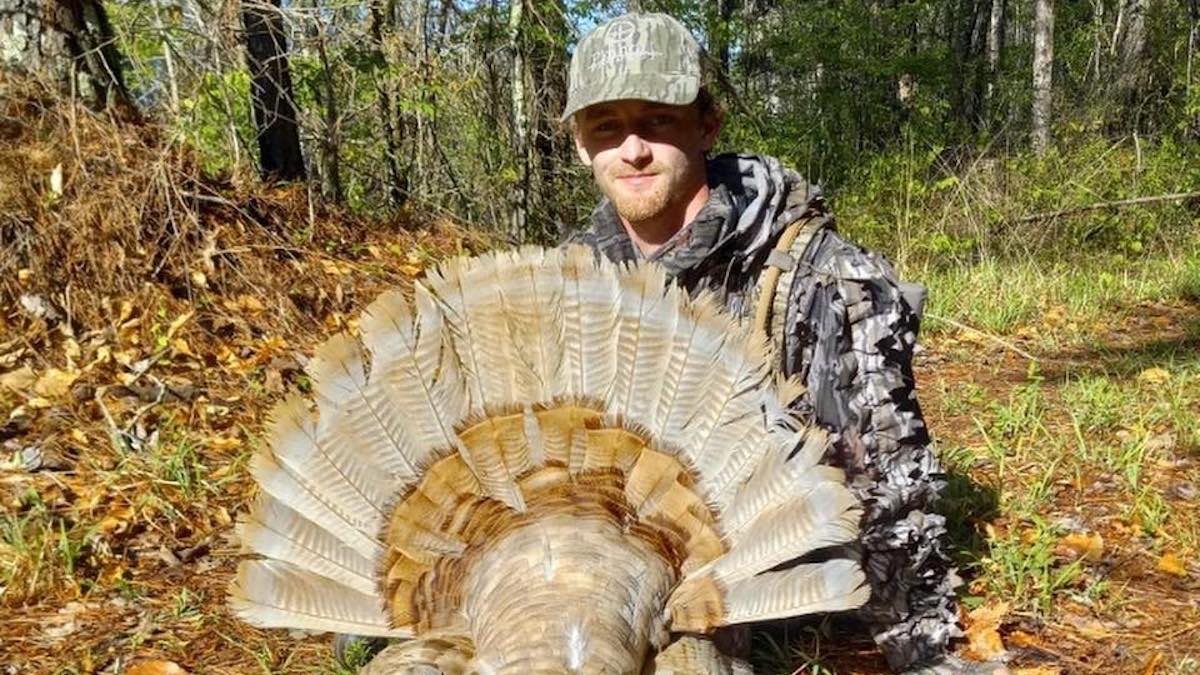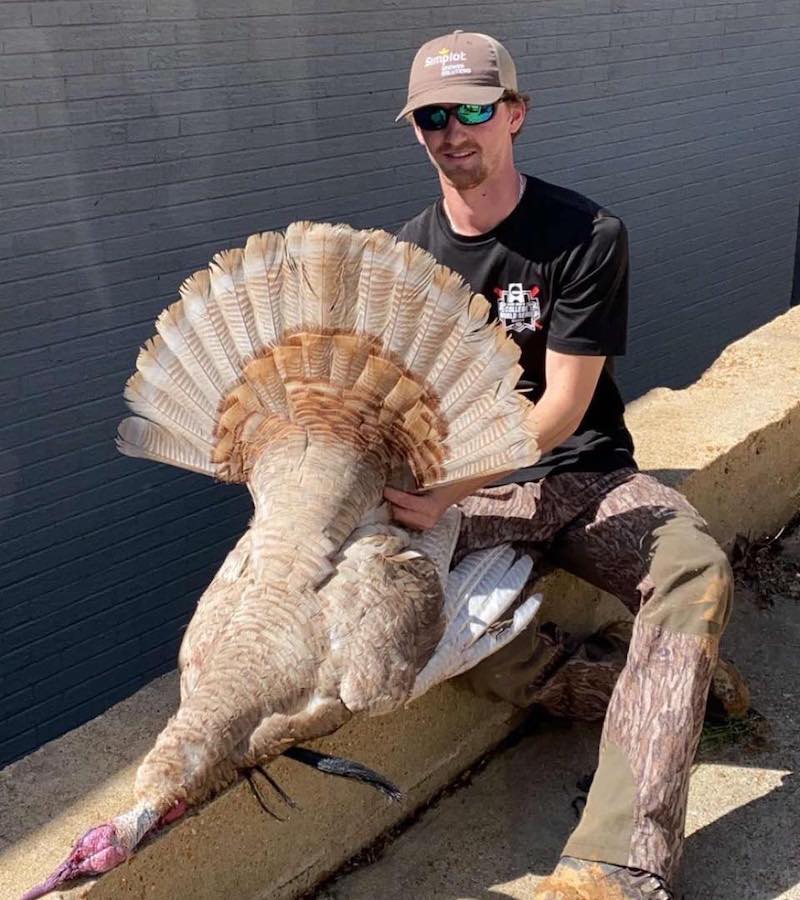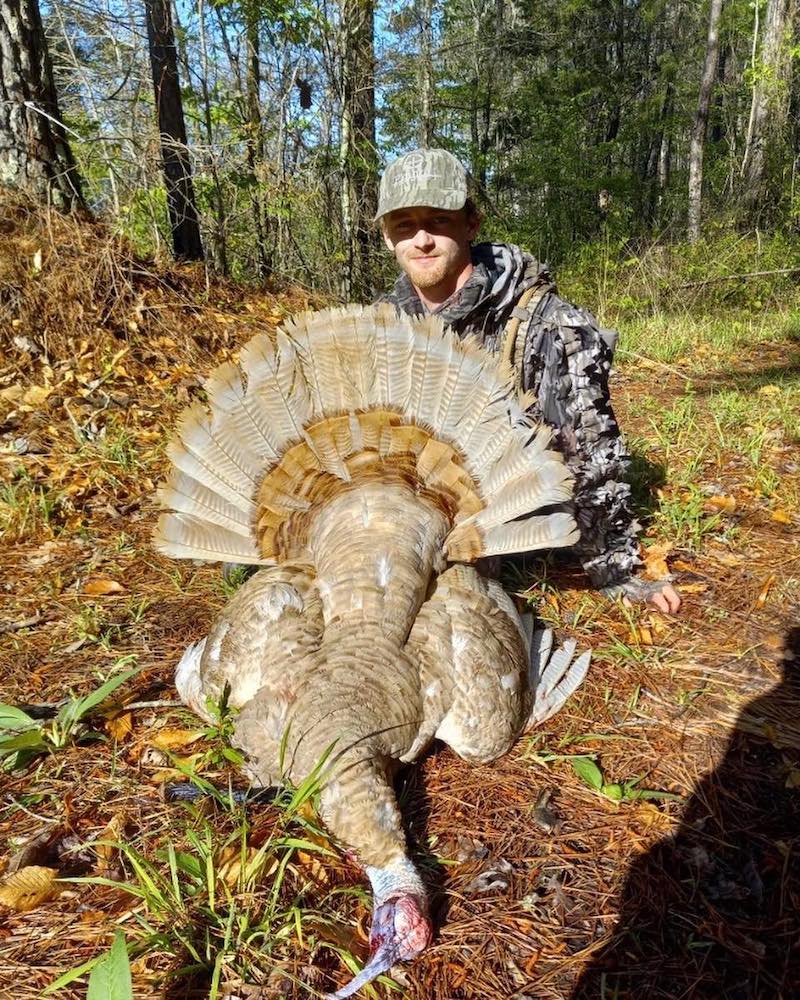
Tyler Anderson was hunting Saturday, March 25, when he bagged the bird of a lifetime, a rare three-bearded, light-colored turkey.
The morning started like any other weekend during spring turkey season. Anderson, of Carthage, Mississippi, headed into the woods, just like he had the previous weekend. He was hunting on land that he’d hunted many times in the past, and he’d taken his share of turkeys there, but none as distinctive as this one.

The morning was slow at first. He tried one spot, but nothing happened, so he moved on to a second spot on a ridge. Anderson had time to check his phone and even dozed off for a nap. After that, he decided to return to the first location to try to stir something up using a mouth call.
“I walked back there and called and he gobbled,” Anderson told MeatEater. “Next thing I know, I hear the turkey start drumming. I knew he was right close. He kept on, and finally, I could see him coming through the woods. At first I thought it was just the way the sunlight was hitting him that made him look white.”
When the turkey strutted in, Anderson realized it truly was white. The light-colored bird approached about 35 to 40 yards when Anderson took his shot.
“I had no idea what to say,” Anderson said. I looked at him and thought, ‘wow,’ then I noticed he had three beards and thought it was unbelievable.”

Anderson, 25, has been hunting turkeys for as long as he can remember. It’s what he loves to do, and he would have been happy with any bird that morning, but it wasn’t just any bird that he connected with.
Unusual color presentations in wild turkeys are typically due to genetic mutations caused by a recessive gene. According to the National Wild Turkey Federation, complete albinism is exceedingly rare, and true albinos are seldom found among wild turkeys.
Instead, most white or lighter-colored wild turkeys are leucistic, not albino. The leucistic mutation retains melanin (pigment-producing cells) in some features, whereas albinism is a complete lack of melanin.
Multiple beards aren’t something every strutting tom is sporting, either. Wild turkey researcher Dr. Mike Chamberlain told MeatEater that less than 10% of turkeys have more than one beard. Want to know what causes this unusual display? Click here to find out.
While many leucistic turkeys appear smoke gray, the bird Anderson harvested has a unique blond color; combined with the three beards, it’s certainly not your average gobbler. Understandably, Anderson was thrilled with his harvest. He dropped the turkey off at his taxidermist, Nicky’s Wildlife Artistry, of Collins, Mississippi, that same day.
It was never his goal, but now that Anderson has bagged this once-in-a-lifetime bird, he is just going to continue to do what he loves.
“I just love to turkey hunt,” Anderson said. “I would have been happy with any old turkey.”






